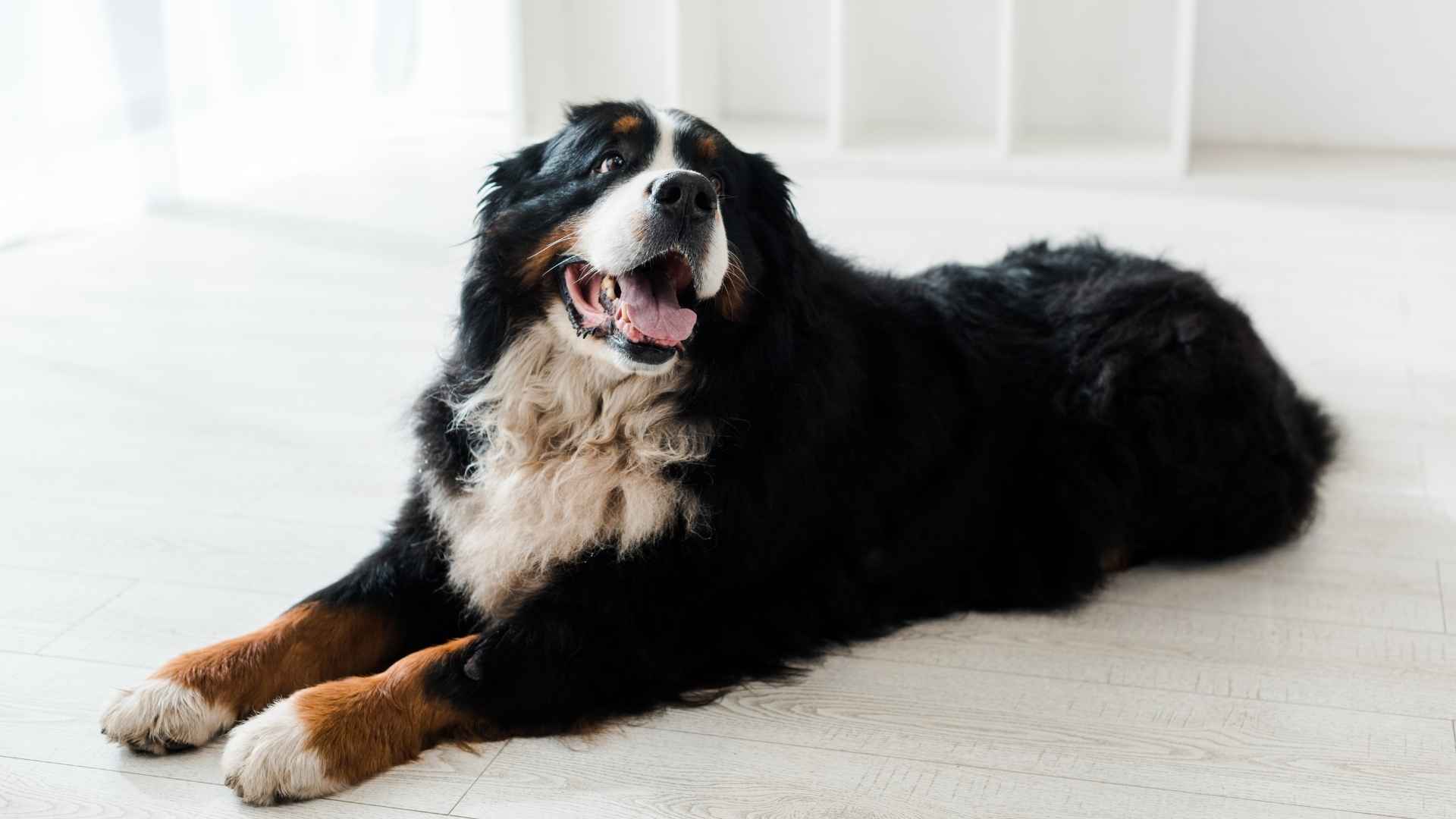Ever imagined having a dog so enormous it stops traffic on walks, can sneak snacks off the counter without trying, and gives hugs that feel like being wrapped in a furry bear blanket? Welcome to the world of giant-sized dog breeds—where everything from their paws to their personalities is super-sized.
These majestic canines are more than just their large stature. While their towering frames and powerful builds may turn heads, it’s their gentle hearts, loyal souls, and surprisingly goofy antics that truly leave an impression.
But don’t be fooled—owning a big dog isn’t just about bragging rights or cuddles the size of car crashes. They come with big needs: space, strength, care, and a deep commitment to training. Still, for the right owner, the rewards are massive.
For those up to the challenge, the reward is a bond as big as the dog itself. We’ll dive into the top large dog breeds and what it takes to welcome one of these lovable titans into your life.
Giant-Sized Dog Breeds
1. Irish Wolfhound
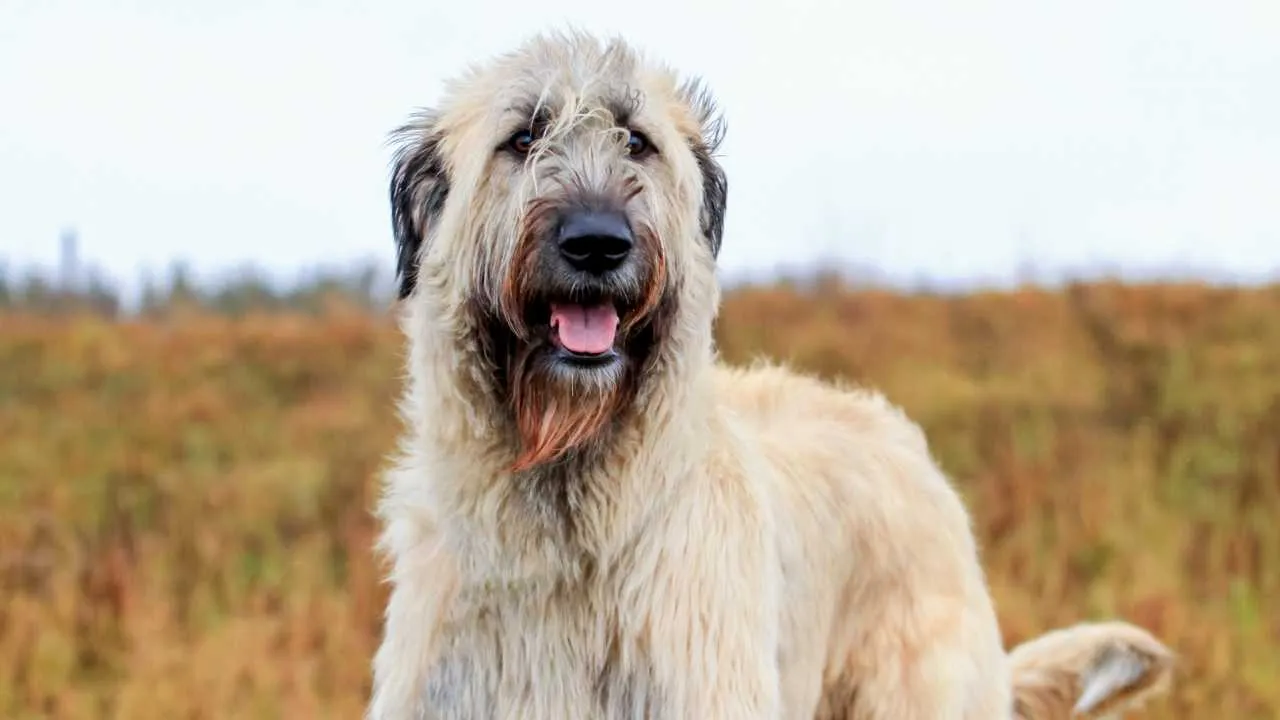
Height: 30–35 inches (and sometimes more!)
Weight: 105–180 pounds
Imagine a dog so tall, it could read over your shoulder while you’re sitting down—and probably critique your book choices. That’s the Irish Wolfhound, the tallest breed. Towering at nearly 3 feet at the shoulder, these large dogs were originally bred to hunt wolves (yes, actual wolves), but today they’re more likely to hunt for the coziest spot on your couch.
Despite their intimidating size, Wolfhounds are the introverts of the canine world—Calm, quiet, and surprisingly sensitive. They’re the kind of dog who will lean into your leg like a 150-pound weighted blanket when they want affection, or gently nudge you with a nose the size of a tennis ball for more ear scratches.
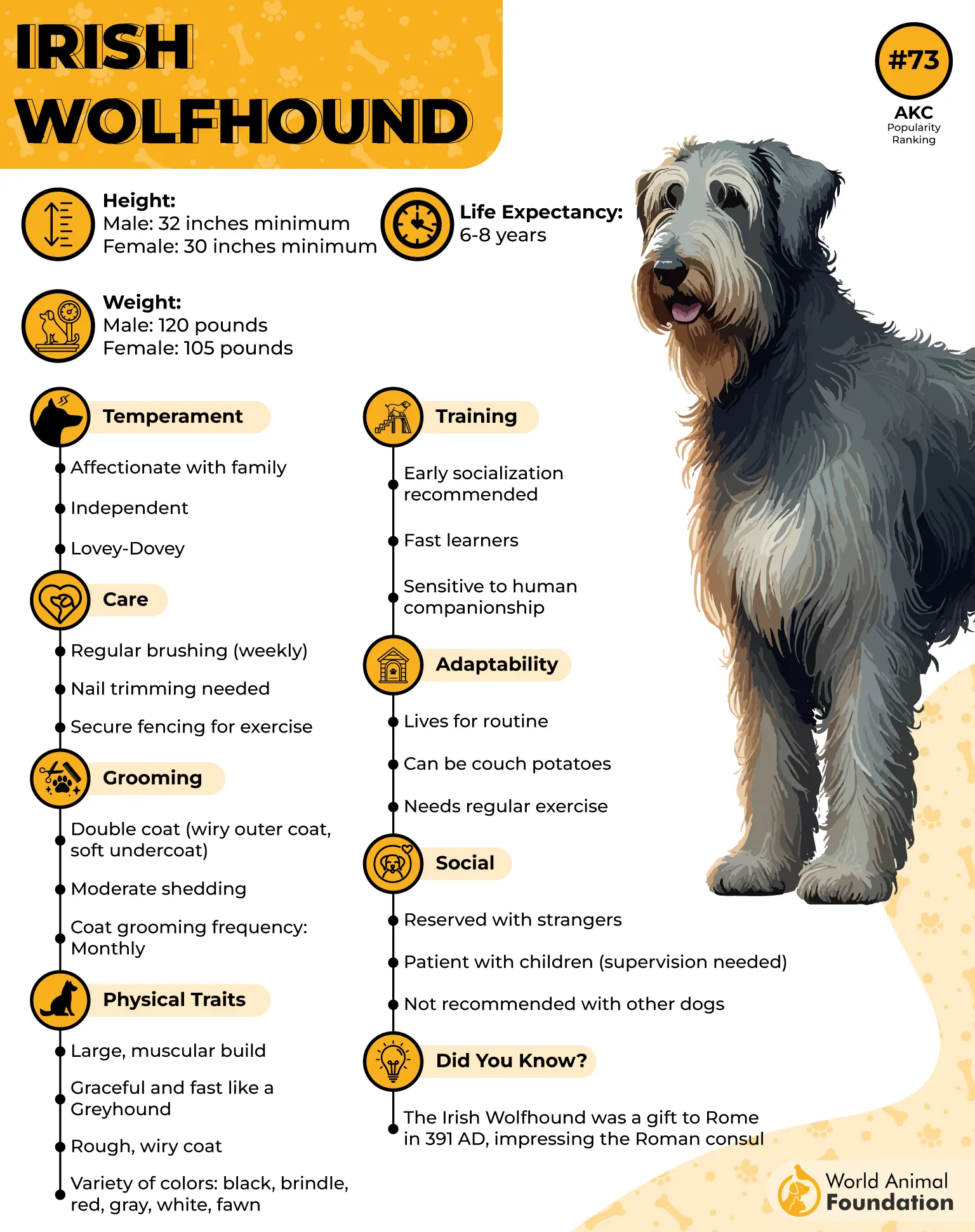
Their needs? Think wide open spaces (a studio apartment won’t cut it), short bursts of moderate exercise (they’re more about dignity than dashing), and early training (because when they “gently” jump up to say hello, it’s like being hit by a friendly linebacker).
However, puppies and young Wolfhounds can be full of energy and quite rambunctious, which might make them less suitable for families with very young kids. Purina says, while they generally get along well with other dogs, their massive size can be a bit overwhelming for some canine companions.
Fun Fact: These big dogs have such long legs and tails, they sometimes forget where the rest of their body ends, which can make coffee tables a battlefield.
2. Saint Bernard
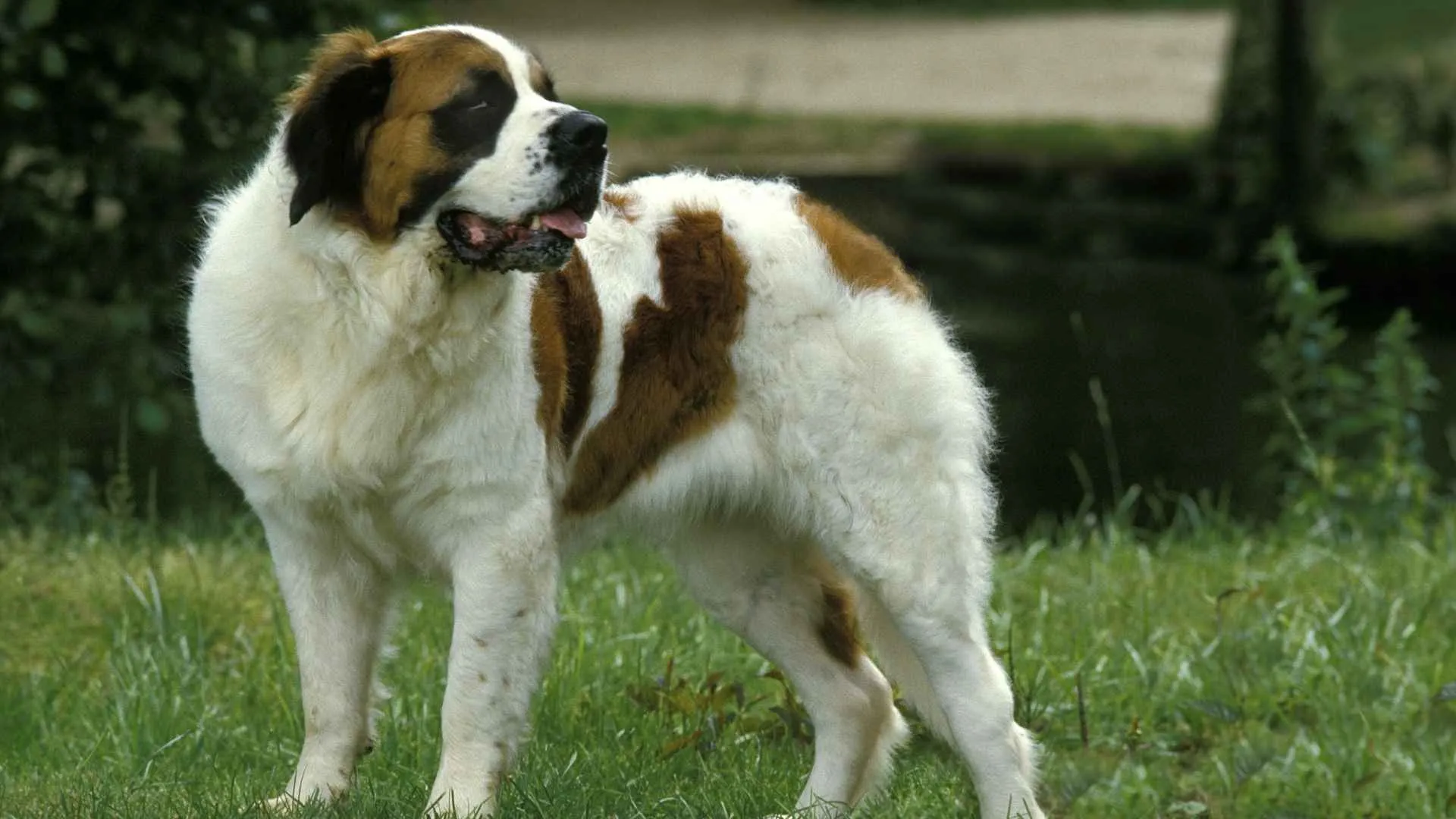
Height: 26–30 inches
Weight: 120–180 pounds
The Saint Bernard is like that giant, lovable friend who always shows up with a warm hug and a goofy smile. This giant dog breed hails from the snowy Alps, where they earned fame as rescue dogs, trudging through blizzards with tiny barrels of brandy (probably not really, but it’s the thought that counts).
Known for their affectionate nature, they adore family time, are especially great with kids (think of them as living, breathing, tail-wagging babysitters), and are patient enough to tolerate everything from dress-up to cuddle pileups.
That said, their deep chests make them prone to bloat, a serious health problem where the stomach fills with gas, so it’s important to monitor exercise and feeding schedules carefully. Saint Bernards have a moderate energy level, needing at least one solid 30-minute walk a day—but don’t be surprised if they’re game for a longer hike or a snowy adventure.
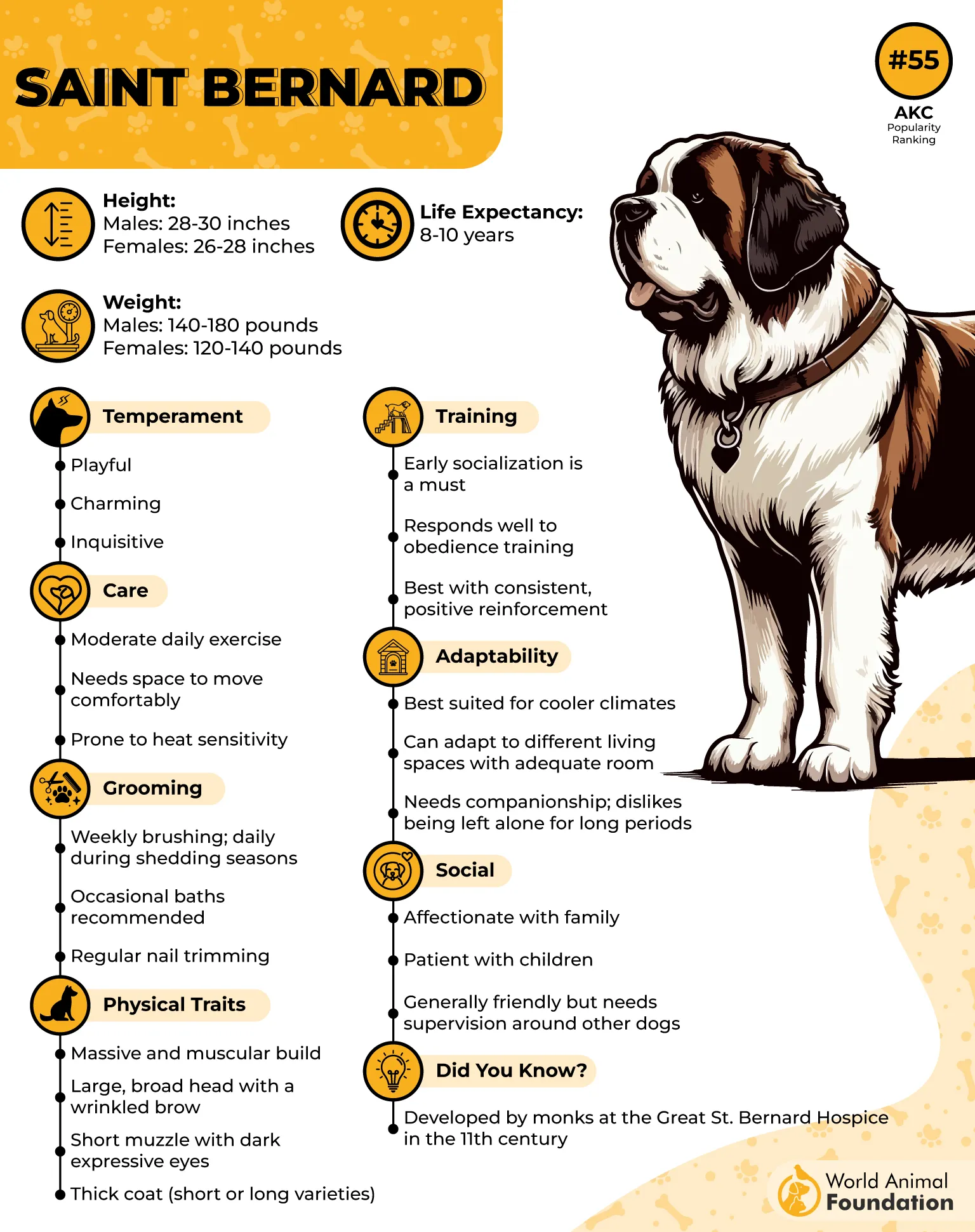
They’re generally quiet and not excessive barkers—but you may find a few suspicious holes in your backyard, thanks to their historical digging instincts as former search-and-rescue pros.
They’re also total people dogs and hate being left alone for long stretches. Separation anxiety is real with this breed. On the plus side, they’re incredibly intelligent and eager to please, making them stars in puppy training, obedience classes, and anything involving treats (lots of treats).
But remember: they shed like it’s their job, snore like freight trains, and have a strong “leaning” habit. Your knees will need to be emotionally prepared.
Fun Fact: A Saint Bernard named Barry is credited with saving over 40 people in the Swiss Alps—and no, he never spilled a drop of brandy.
3. Neapolitan Mastiff
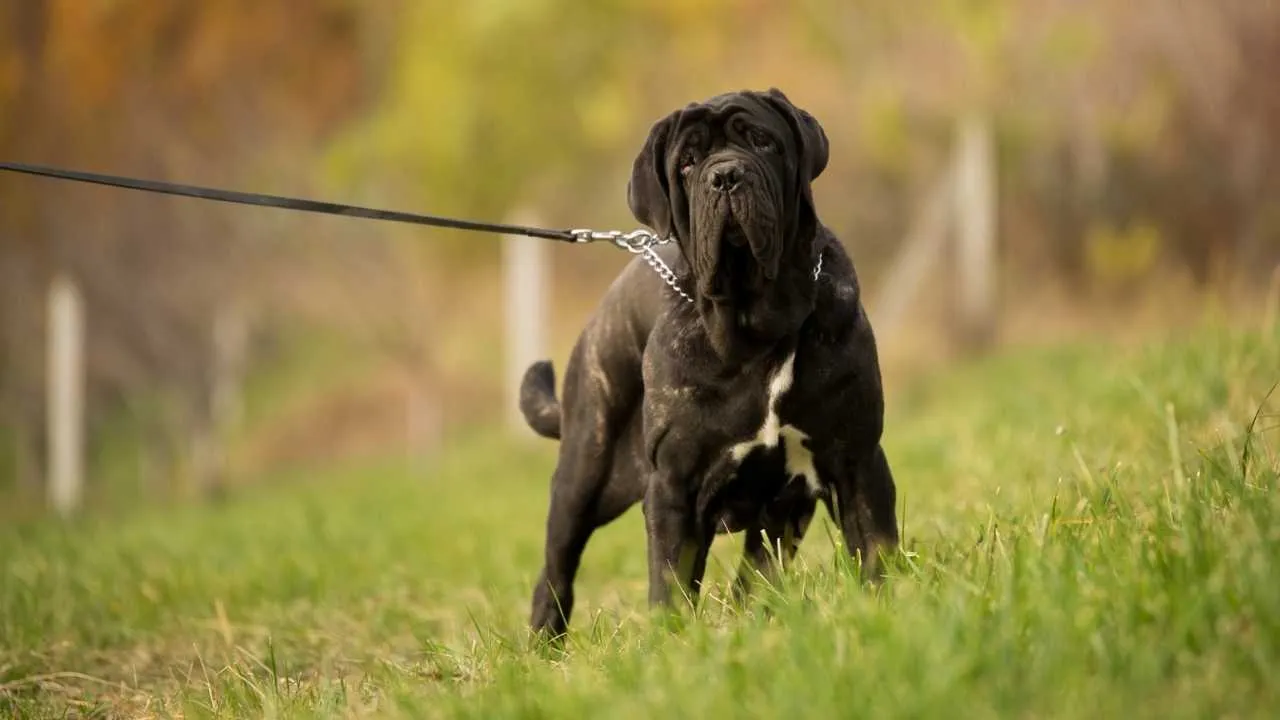
Height: 24–31 inches
Weight: 110–150 pounds
Meet the Neapolitan Mastiff, a dog that looks like it’s been through a car wash and forgot to towel off. With wrinkles on top of wrinkles, this ancient Roman guardian might resemble a melted wax sculpture—but underneath all that droopy face is a fiercely loyal, surprisingly sweet companion.
These large dogs were bred to guard, and it shows: they’re suspicious of strangers, protective of their people, and have a bark that sounds like it could shake the ground. But don’t worry—around the family, they’re big softies. Think “bodyguard by day, oversized lap dog by night.”
Neapolitan Mastiffs tend to be a bit lazy (okay, a lot lazy), so regular exercise and mentally engaging activities are essential to keep them healthy and entertained. Think slow walks, puzzle toys, and the occasional burst of enthusiasm when food is involved.
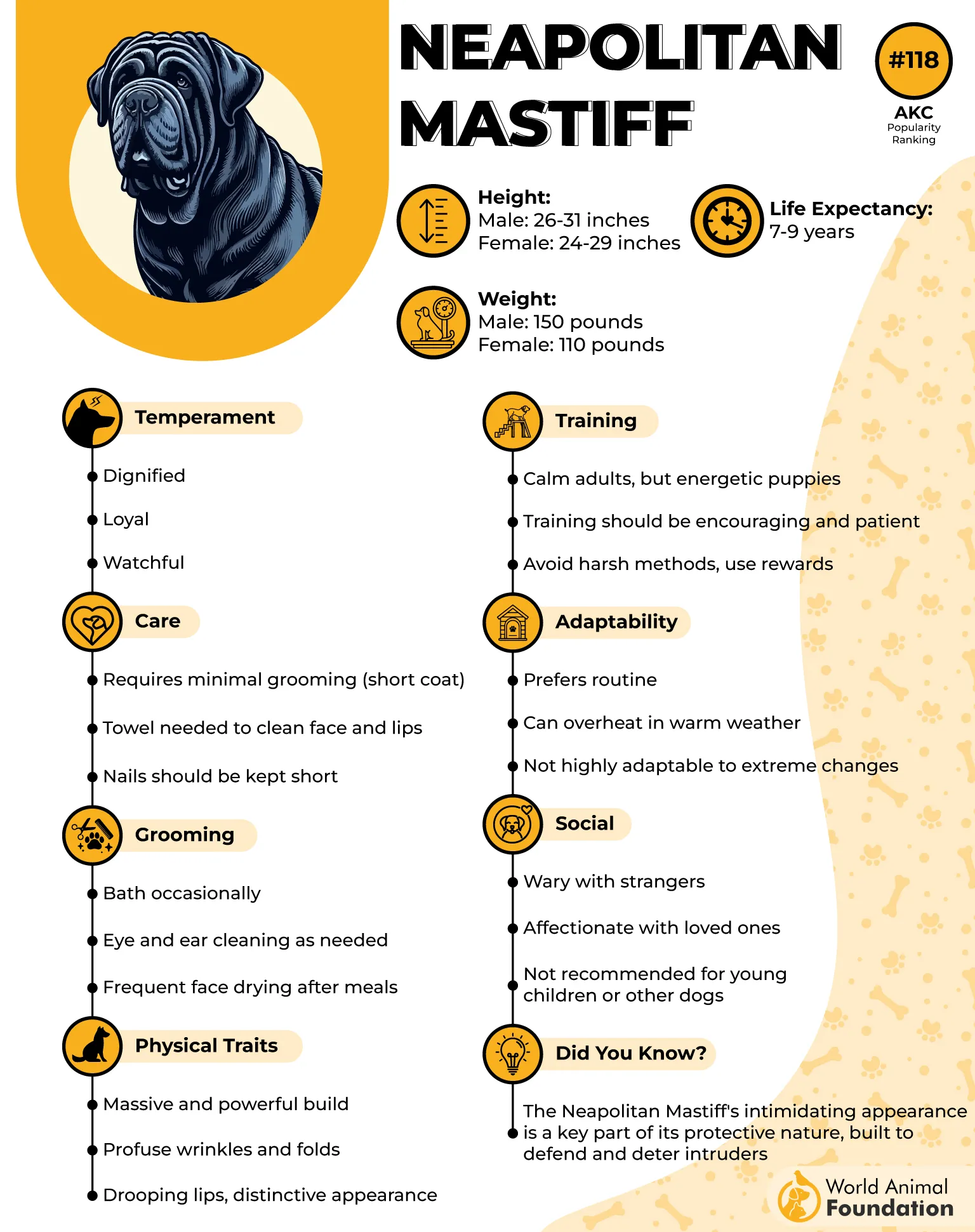
These big dogs have a short life expectancy—typically just 7 to 9 years—due to their massive size and susceptibility to various health issues. It’s one of the trade-offs of owning such an epic beast.
Training should start early—and we mean early. These big dogs were bred to work independently, so they’ve got a stubborn streak a mile wide. Training them requires patience, consistency, and maybe a sense of humor… because they’ll test your limits with those big, droopy eyes and an “I’m not moving” attitude.
Caring for a Neo means embracing drool as a lifestyle choice (you’ll want a mop in every room) and making peace with their strong-willed attitude.
Fun Fact: Their loose skin and ugly appearance aren’t just for show—they were originally developed to protect them in battle, allowing them to keep fighting even if grabbed. Today, though, they mostly just help them look adorably grumpy on your couch..
4. Newfoundland

Height: 26–28 inches
Weight: 100–150 pounds
The Newfoundland, affectionately called the “Newfie,” is a real-life teddy bear—if your teddy bear could swim like an Olympian and weighed over 100 pounds. American Kennel Club (AKC) describes them as sweet-tempered, calm, and famously gentle. This breed has even earned the nickname “nanny dog” for its natural patience and protectiveness around children.
These gentle giants are natural swimmers, equipped with webbed paws and thick, water-resistant coats that let them glide through icy waters like furry submarines. Originally bred for water rescues, Newfies were pulling drowning sailors to shore long before lifeguards had whistles.
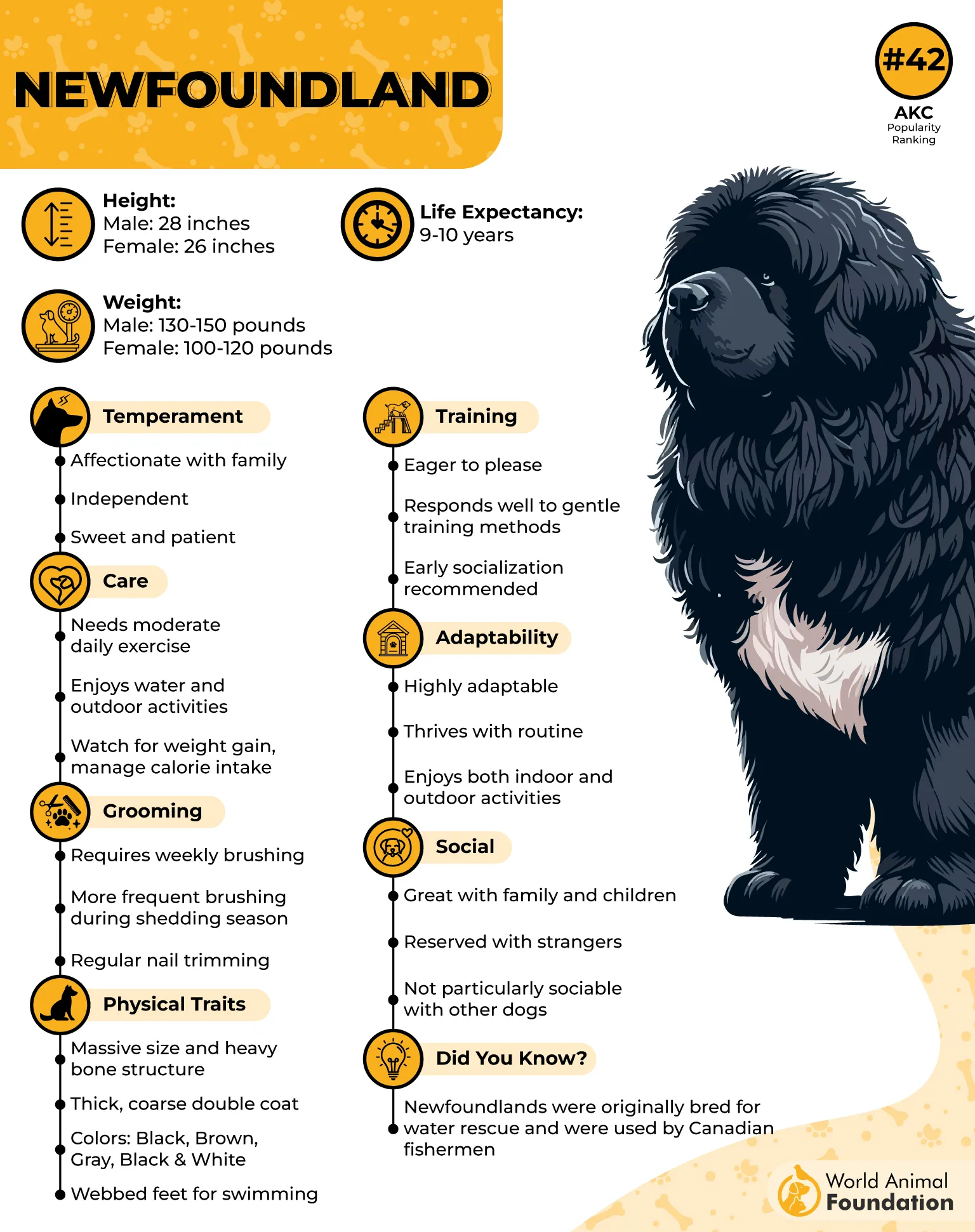
But while they’re loving and loyal, that affection can sometimes turn into separation anxiety if they’re left alone too long. To keep your Newfie happy during your absence, try leaving behind interactive toys and puzzles. They’re smart pups, and their intelligence makes them highly trainable, as long as you’re patient and positive.
Just be prepared for a bit of drool, a lot of fluff, and the warmest cuddle sessions this side of a snowstorm, especially if you love working dogs.
Fun Fact: A Newfoundland once jumped into icy waters to rescue Napoleon Bonaparte when he fell overboard. Talk about a historic hero!
5. Scottish Deerhound
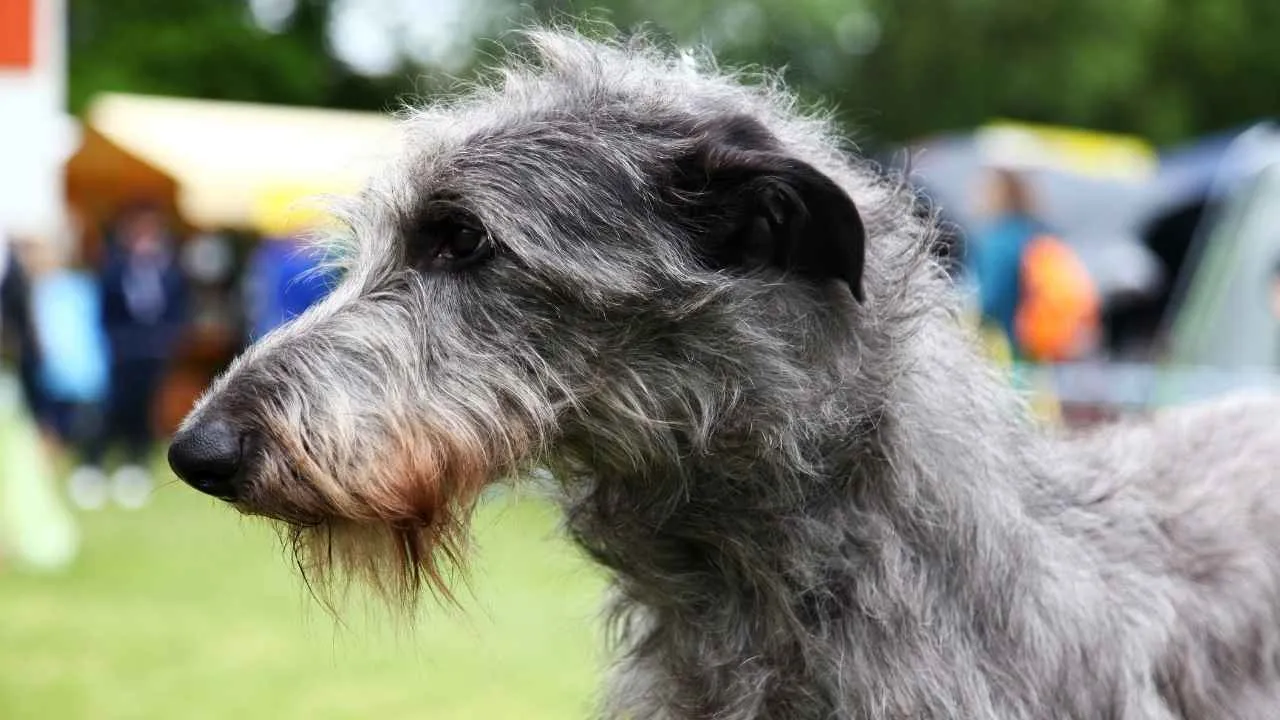
Height: 28–32 inches
Weight: 75–110 pounds
The Scottish Deerhound looks like a scruffier, more laid-back cousin of the Irish Wolfhound. Tall, lean, and wrapped in a wiry coat, they were bred to chase down deer across the Scottish Highlands, which means they run like the wind but live like couch philosophers.
They’re affectionate without being clingy, dignified without being snobby, and goofy just often enough to keep things interesting. While these hounds are generally calm and composed, they do have a strong prey drive, so households with smaller dogs or cats and rabbits may need to keep a watchful eye. A squirrel sighting could turn your serene walk into an impromptu sprint!
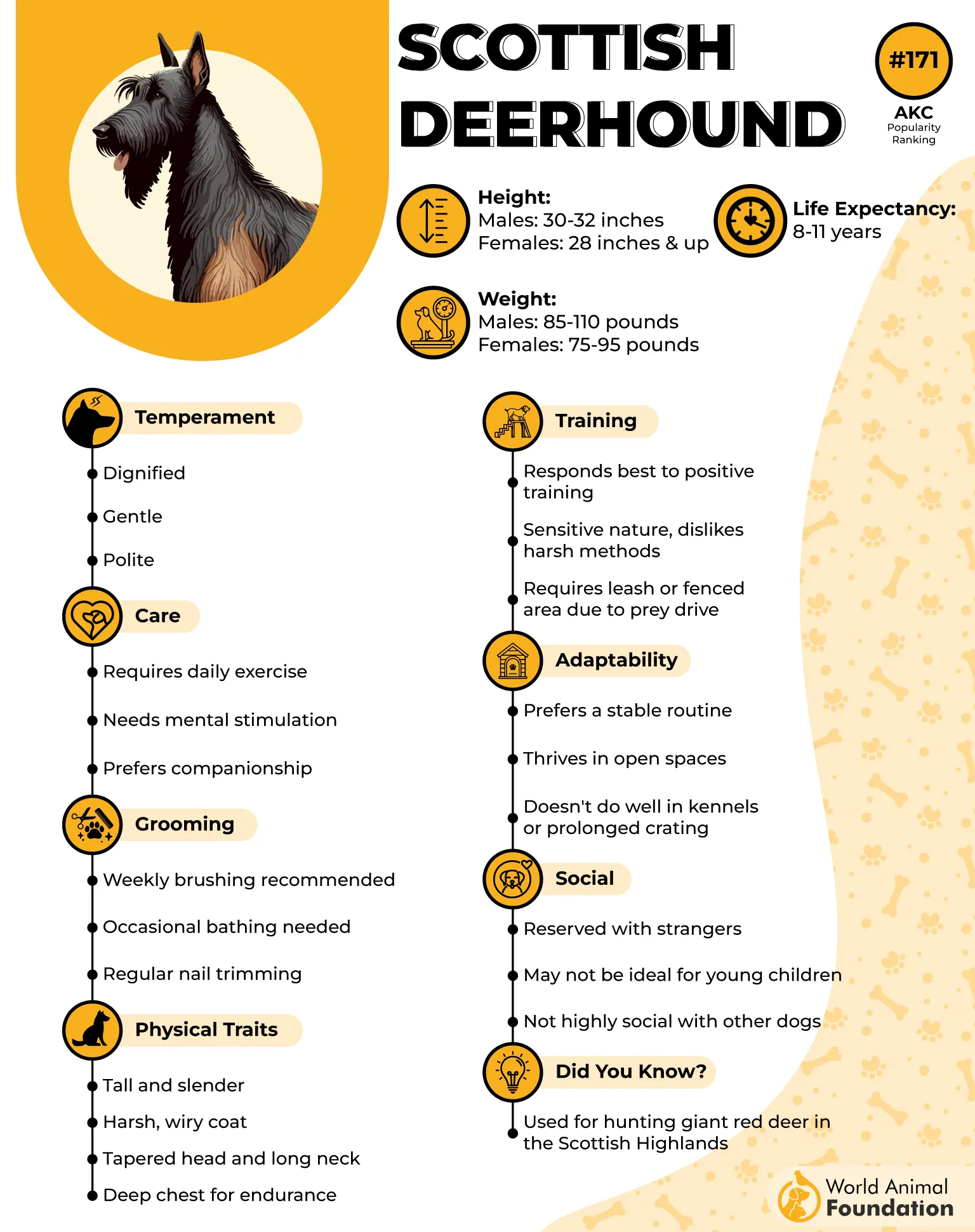
When it comes to grooming, Scottish Deerhounds are delightfully low-maintenance. Their crisp, thick double coat only needs a weekly brushing to keep it looking tidy, with the occasional bath thrown in for good measure—no fancy spa days required.
Despite their hunting heritage, they are more laid-back than many other breeds. That said, they still need at least two 30-minute exercise sessions a day to keep them healthy and happy. Think of it as just enough to stretch those long legs, not tire them out completely.
With proper training and maturity, they transform into a dignified and gentle housemate—equal parts graceful and goofy, with just enough royal flair to command the best spot on the couch.
Fun Fact: In olden times, these big dogs were so revered that only nobility could own them. These days? They’re happy to share your bed and steal your snacks like royalty in retirement.
6. Leonberger
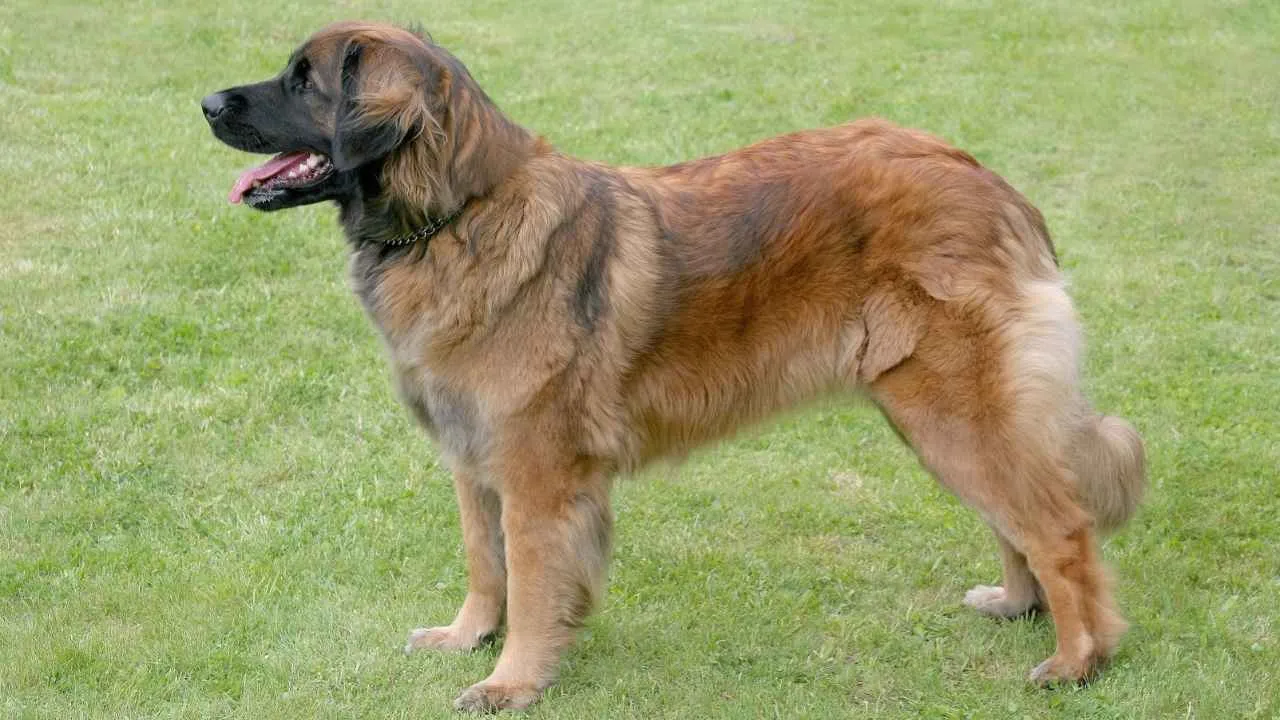
Height: 25.5–31.5 inches
Weight: 90–170 pounds
The Leonberger is what happens when you mix the size of a lion with the heart of a golden retriever. These majestic fluff-balls, often considered giant breeds, make fantastic family pets and are even known to excel as therapy dogs, thanks to their calm nature and deep emotional intuition.
Originally bred as a companion for royalty (because, of course), the Leonberger is surprisingly athletic for their size. They love swimming, hiking, pulling carts, and being the overly enthusiastic best friend in your family photo.
Leos are deeply bonded to their people and are remarkably in tune with human emotions, making them loyal companions and dependable protectors.
They’re typically well-mannered in public, so you can take them out and about without worrying they’ll pick a fight—or scare the neighborhood. That said, while they’re generally good with other household pets, they may show aggression toward unfamiliar dogs, as noted by WebMD.
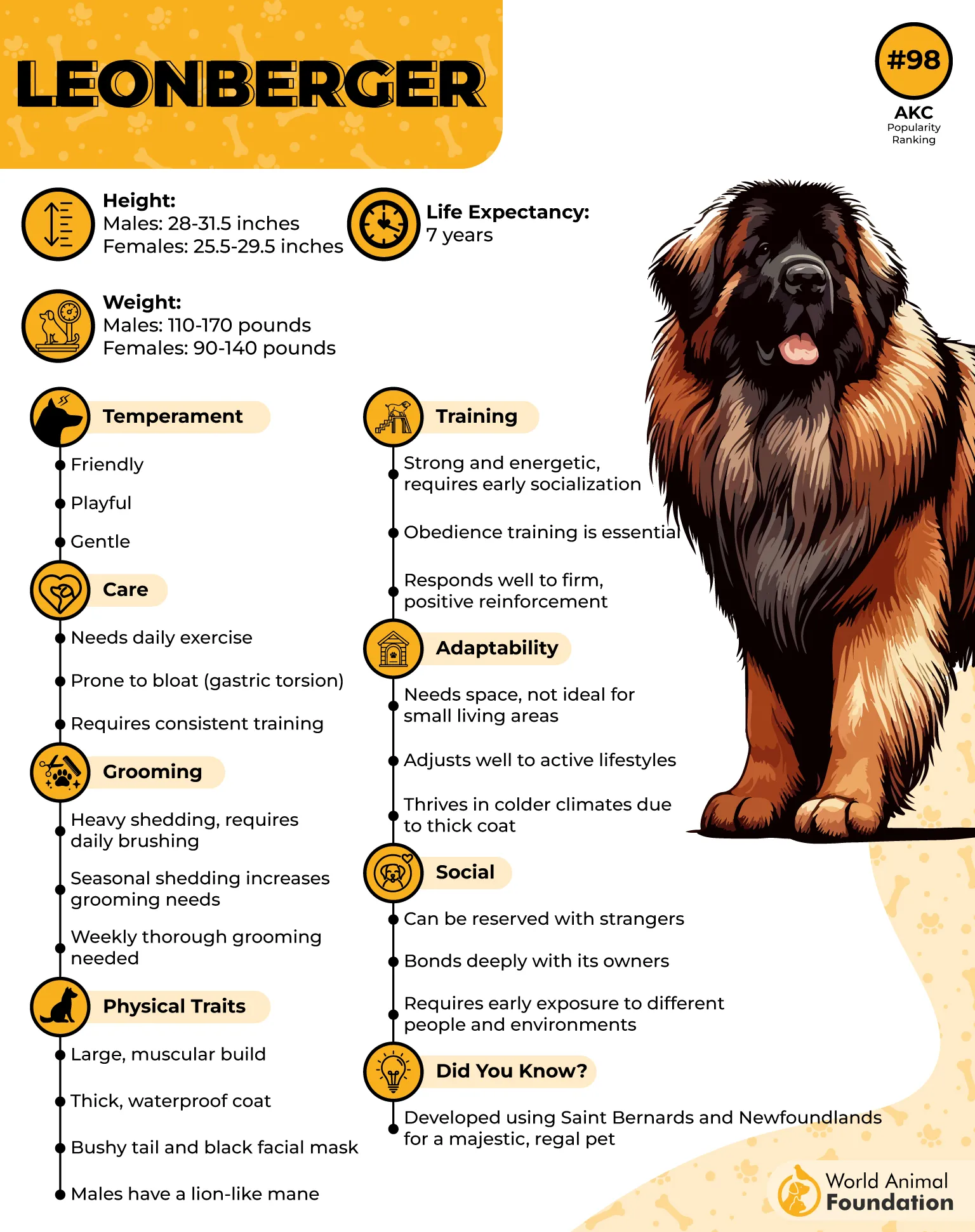
Unfortunately, all that size comes at a cost—Leonbergers are prone to joint issues and heart disease, with an average lifespan of around 7 years. It’s a short run for such a big heart, but it’s filled with love, play, and loyalty.
Leonbergers are family-oriented, sensitive, and thrive on human connection. Leave them alone too long, and they’ll guilt-trip you with the saddest puppy eyes ever. Early training and socialization are key—they’re smart but tend to think rules are more like gentle suggestions.
Fun Fact: Leonbergers were reportedly bred to resemble the lion on the crest of Leonberg, Germany. So yes, your dog is technically royalty.
7. Anatolian Shepherd
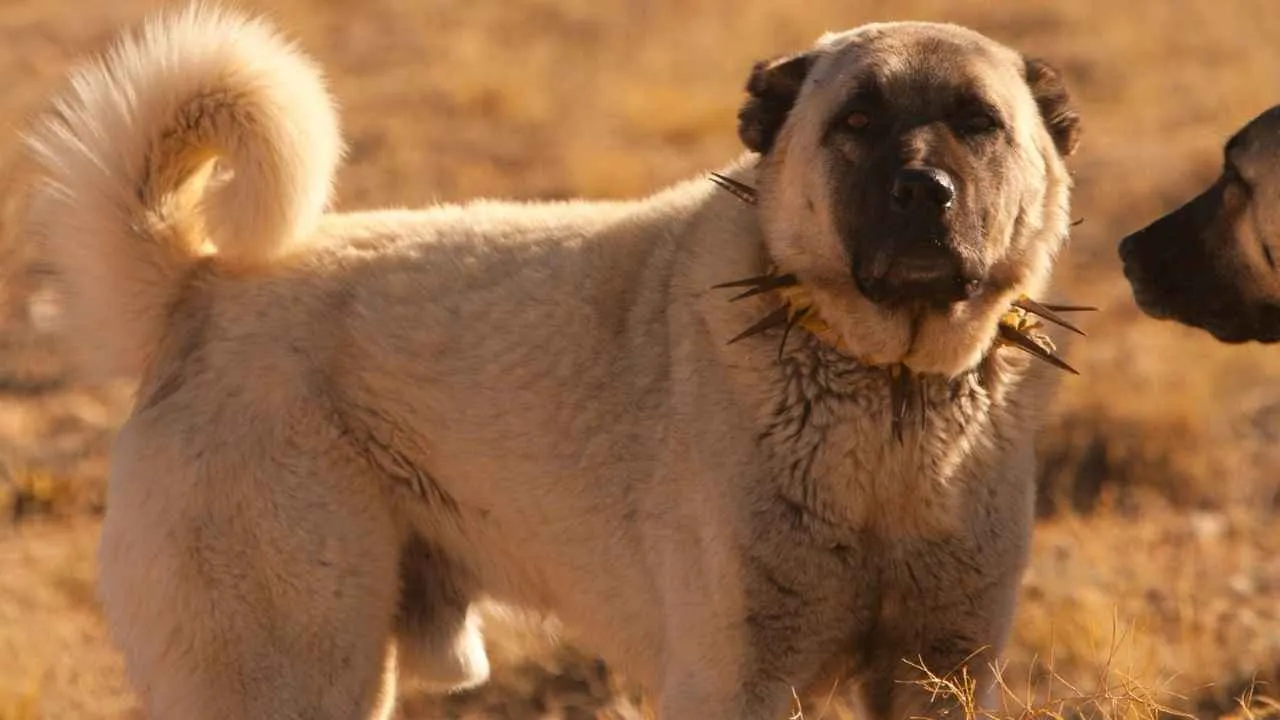
Height: 27–32 inches
Weight: 90–150 pounds
Meet the Anatolian Shepherd, the strong, silent type of the giant dog world. This ancient Turkish guardian was bred to protect livestock from wolves, bears, and probably dragons (if those were ever a real thing). They’re not flashy or cuddly—they’re serious, stoic, and impressively independent.
Anatolians are the kind of dogs who assess every situation like security personnel. Friendly stranger? Maybe. Suspicious squirrel? Absolutely not.
These friendly dogs are incredibly loyal to their humans, but not necessarily the kind to play dress-up or beg for belly rubs. They’ve got stuff to do—even if it’s just patrolling the yard like a four-legged bodyguard.
Bred with a guardian’s instinct, these dogs tend to be alert and cautious around strangers, often using their bark as an early warning system for anything they perceive as a threat.
While they’re not overly energetic, they do benefit from regular outdoor time—a few play sessions or strolls in a secure, fenced yard are usually enough to keep them content.
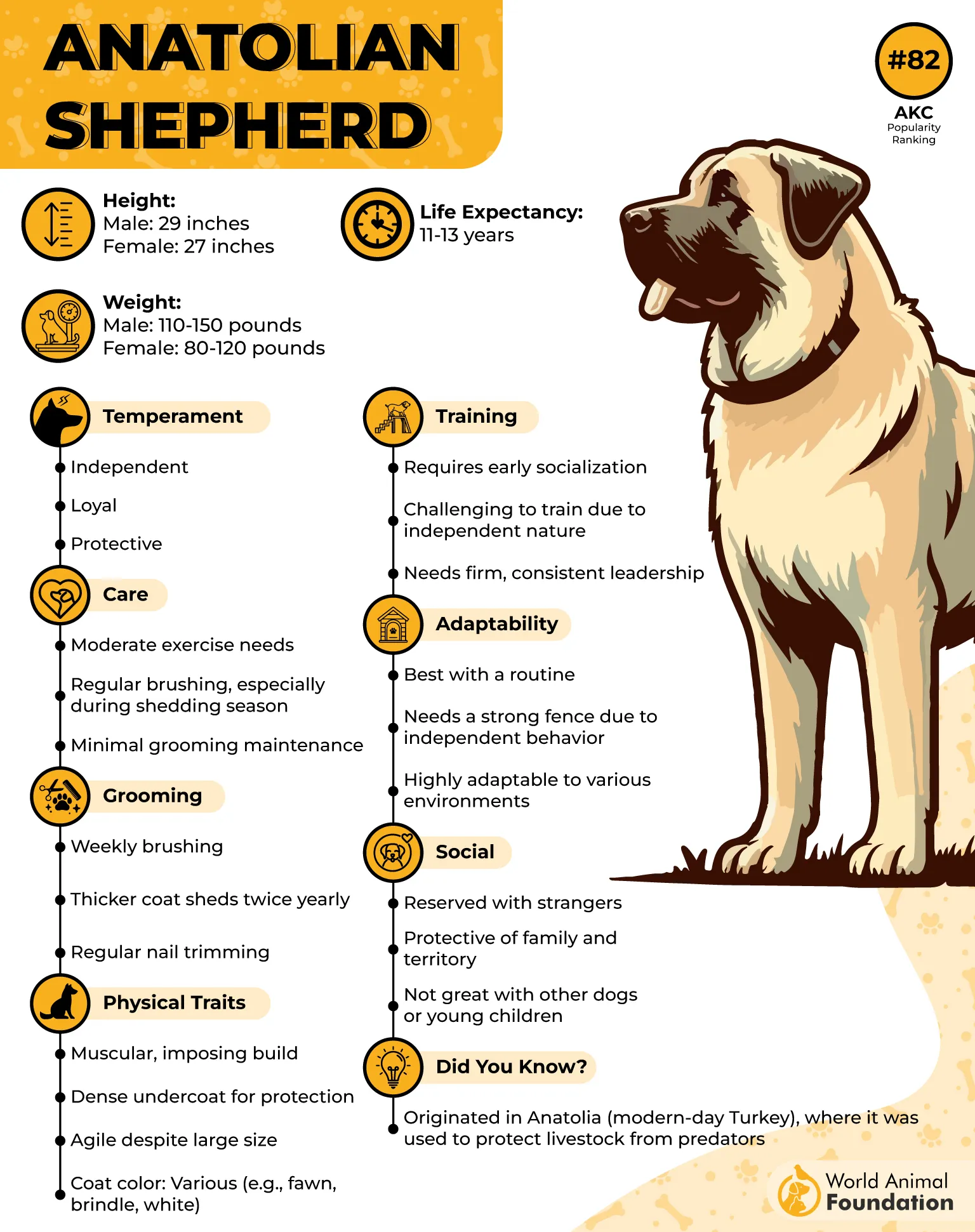
Not ideal for first-time dog owners, the Anatolian Shepherd needs strong, consistent training and lots of space to roam. A tiny apartment will turn them into a furry, frustrated fortress. But with the right owner, they’re calm, devoted, and impressively protective.
Fun Fact: In Namibia, Anatolian Shepherds are used to guard livestock from cheetahs, reducing predator conflict and saving both goats and big cats. Talk about a peacemaker with paws.
8. English Mastiff
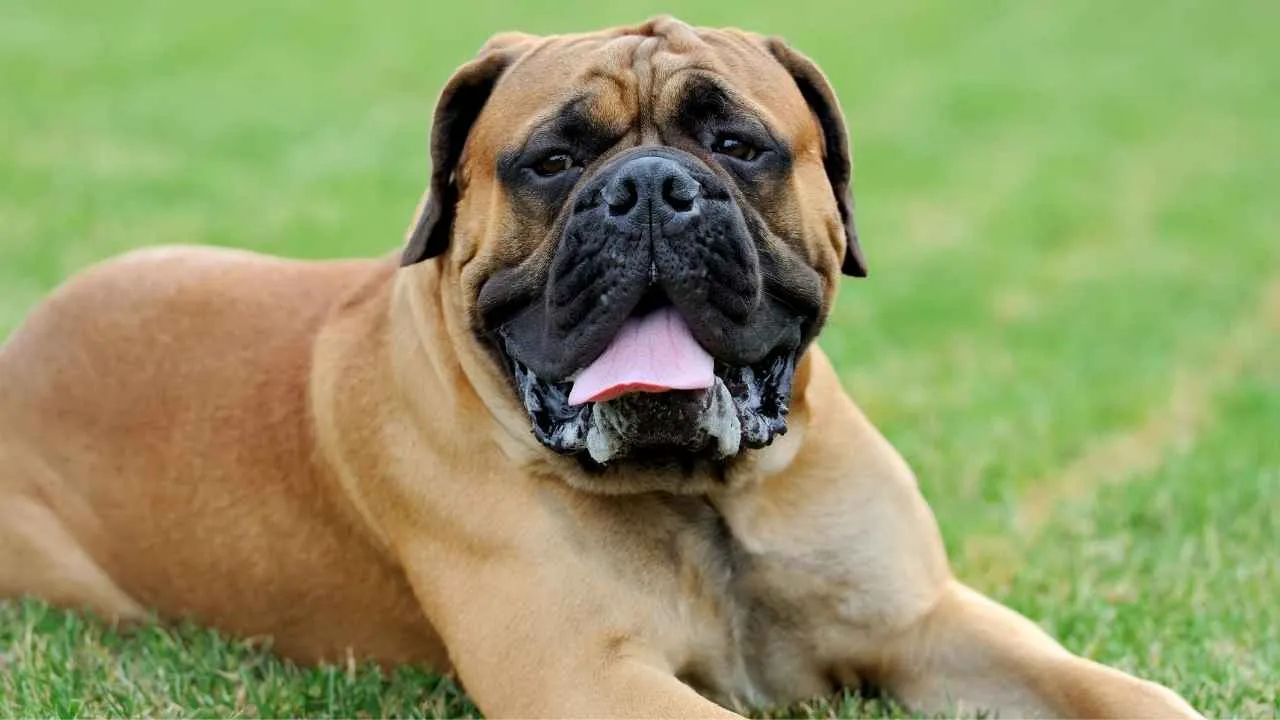
Height: 27.5–34 inches
Weight: 120–230 pounds
The English Mastiff is the gentle giant of all gentle giants. If you’ve ever wanted a dog that could fill a whole room just by existing, this is your breed. With a frame that could double as a small car and a heart the size of Texas, the English Mastiff is a lovable couch potato who thinks they’re still a lap dog (albeit a 200-pound one).
This ancient breed was originally bred to guard estates, and while they can still do that job with ease, their true calling is being an oversized cuddle buddy. English Mastiffs are calm, affectionate, and just massive, so don’t be surprised when your house feels like it has doubled in size after you bring one home.
Exercise needs are moderate—short walks are enough for them to stay fit—but you’ll need a strong arm for leash control (no, they won’t let you walk them). And despite their size, they’re surprisingly agile for their bulk, often finding ways to squeeze into the smallest spaces when they need to.
However, Mastiffs are notorious drool machines, so it’s wise for pet parents to keep a towel nearby for those inevitable slobbery moments. Mastiffs, like many large breeds, are prone to several health issues due to their size and genetics. Common concerns include hip dysplasia, heart problems like cardiomyopathy, and joint issues such as arthritis.
On the bright side, they’re eager to please, quick learners, and respond best to positive reinforcement—think treats, praise, and fun-filled training sessions that keep them engaged and cooperative.
Fun Fact: English Mastiffs are known for their protective nature, so if you’re ever in a tough spot, you might just have your own personal bodyguard… who will also happily nap through any commotion.
9. Great Pyrenees
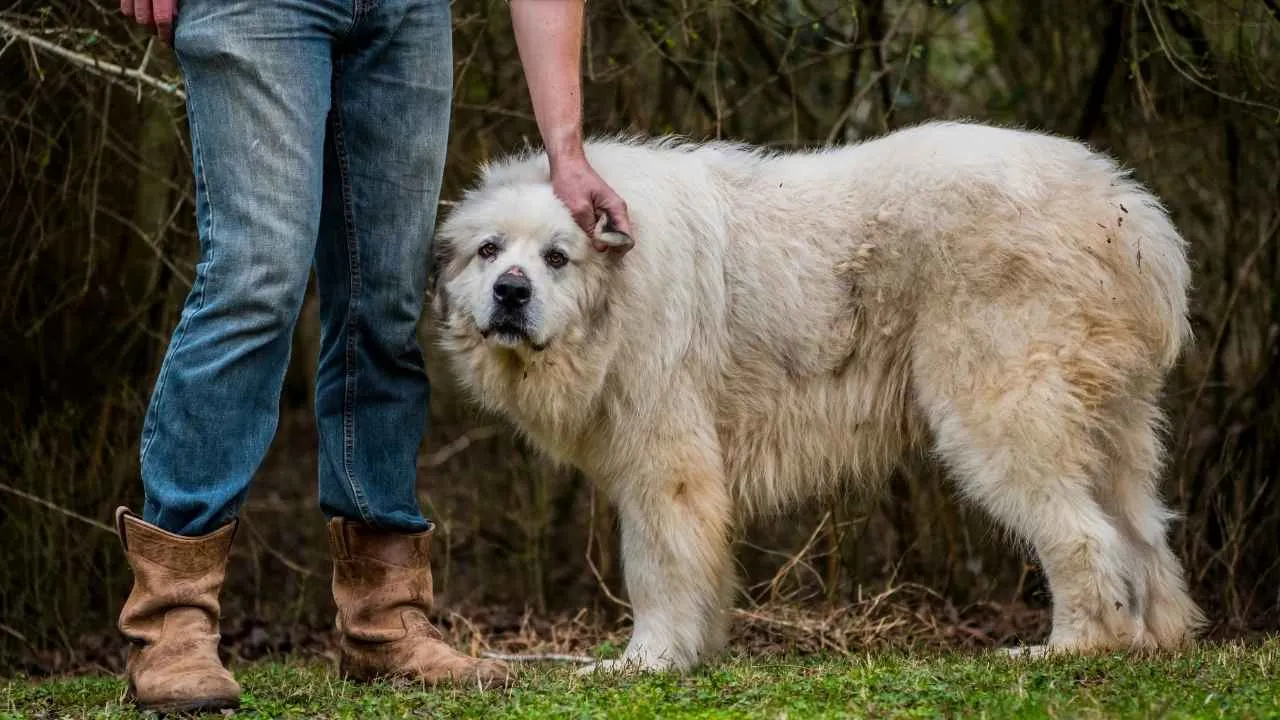
Height: 25–32 inches
Weight: 85–115 pounds
The Great Pyrenees is the majestic, snow-capped mountain dog you didn’t know you needed in your life. This fluffy breed looks like it was designed by nature to stand at the top of a snowy peak, overlooking a vast kingdom—and honestly, they might just think they own the world.
These noble guardians were originally bred to protect flocks from predators in the Pyrenees Mountains, which explains their independent streak and inherent confidence.
Great Pyrenees are not dogs that are constantly seeking your attention—they’re more likely to chill in the yard, staring at you with that “I’m in charge” look. The Great Pyrenees is a dog with an intelligent, wise, and independent personality. They have a laid-back nature paired with strong instincts, making them both easy-going and protective.
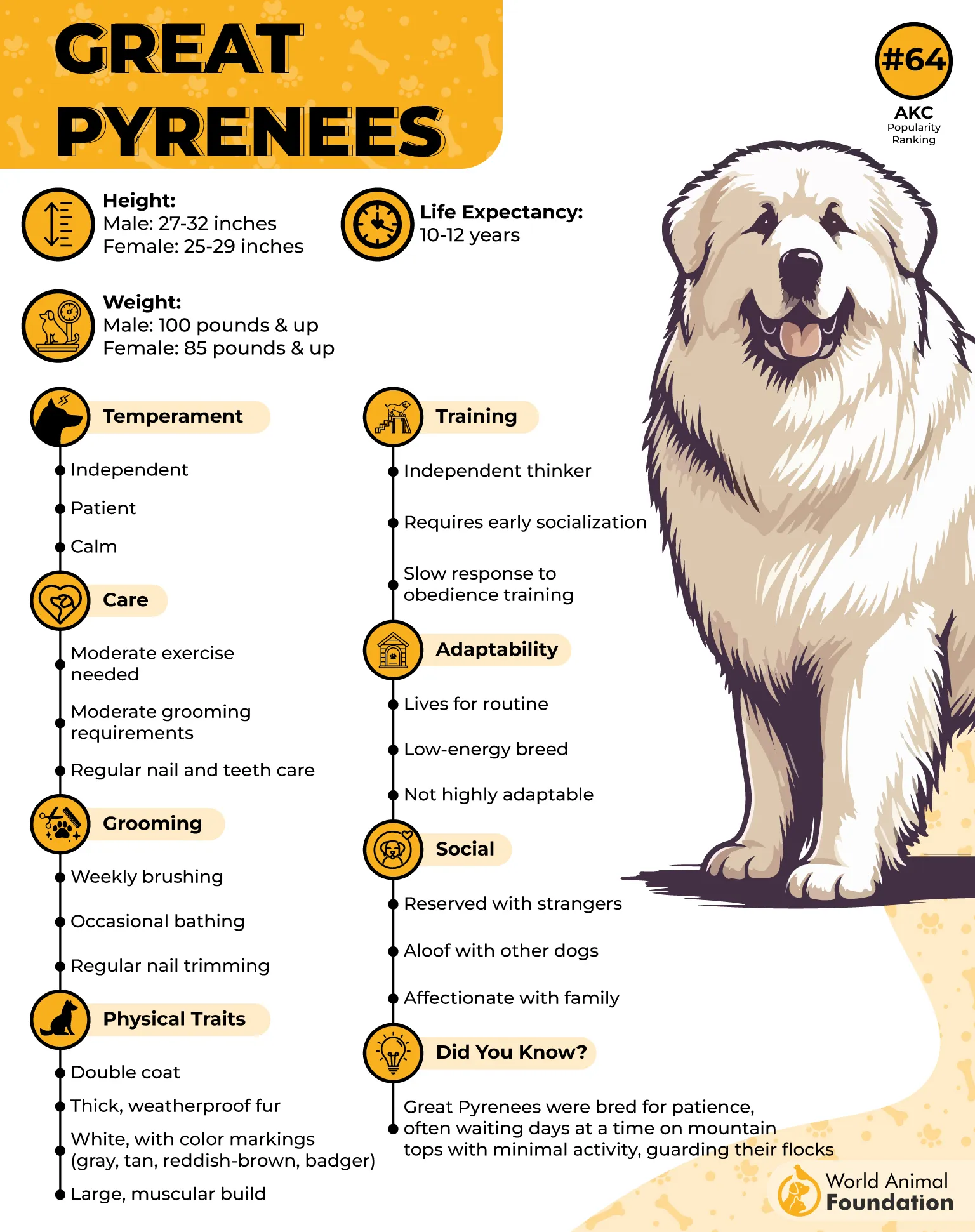
But when it comes to the family, these giants are affectionate, patient, and surprisingly gentle with children. Just know that they do tend to be a little too protective—if you’re not careful, they might try to “guard” your home from that delivery guy just trying to drop off a package.
Known for being highly perceptive, they can pick up on even the slightest mood changes in both humans and animals. Their dirt-resistant, tangle-free coat makes grooming a breeze, so you won’t have to spend hours on upkeep.
Fun Fact: Despite their size, Great Pyrenees are known for their stealthy (and slightly dramatic) ability to sneak into the house unnoticed, leaving behind a trail of fluffy fur wherever they go.
10. Tibetan Mastiff
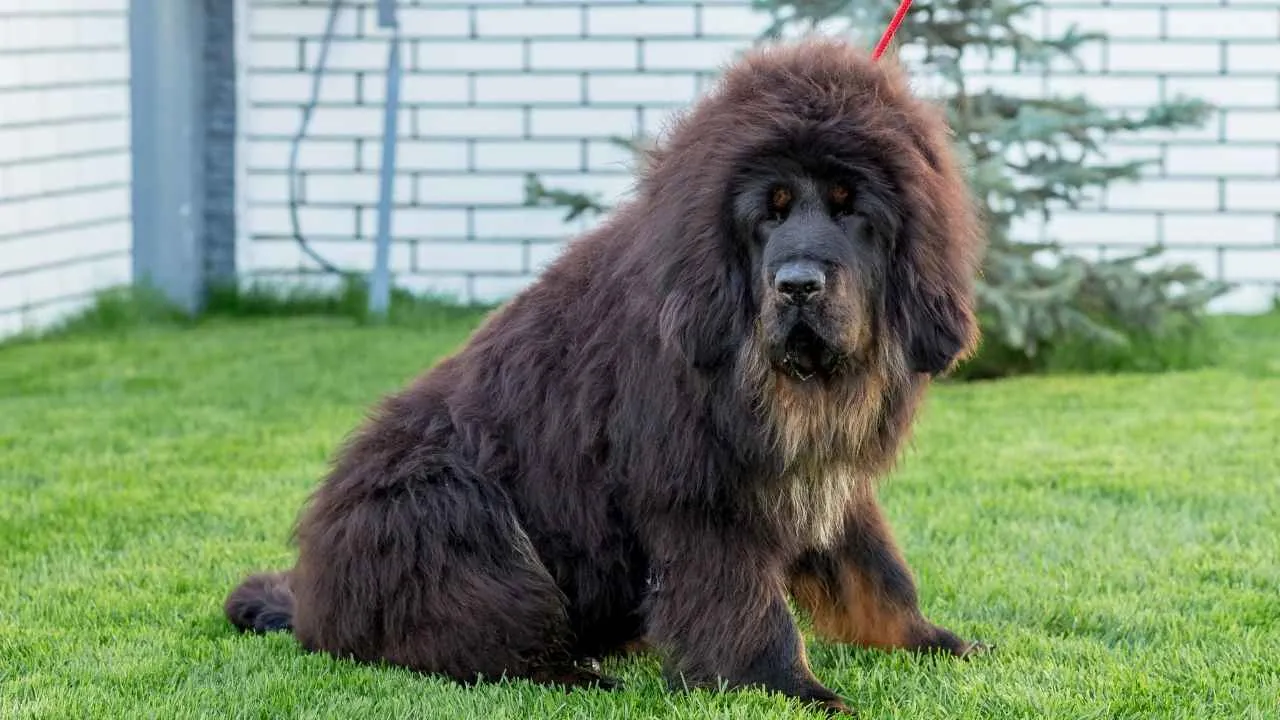
Height: 24–30 inches
Weight: 70–150 pounds
The Tibetan Mastiff is the mystery of the giant dog world. These ancient protectors, often referred to as mountain dogs, from the Himalayas were bred to guard livestock and monasteries in the rugged Tibetan mountains, and they carry themselves with a quiet, almost regal presence.
Imagine a dog so aloof that it has the “don’t bother me, I’m thinking about life” vibe—until it decides to lovingly chase after a ball or just protect everything in sight. Due to their thick, double-layered coat, Tibetan Mastiffs require regular brushing to keep their fur in good condition, and they’re not suited for hot climates.
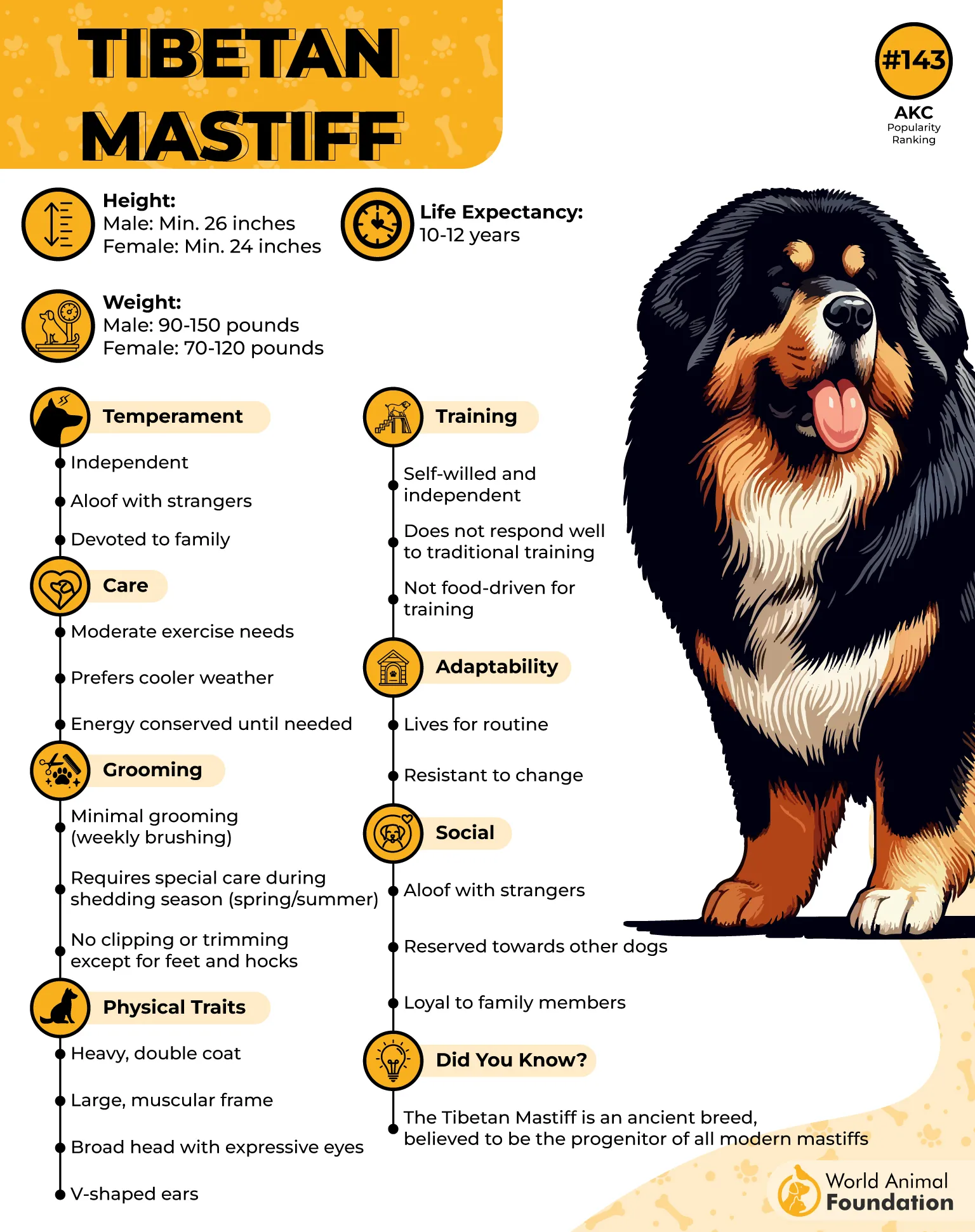
While they’re strong and agile, they lack the endurance for long, continuous exercise, meaning they’re not ideal for jogging partners, says PetMD. Tibetan Mastiffs are independent and strong-willed, which means they’re best suited for experienced owners. They tend to be reserved with strangers but will bond fiercely with their family, often becoming their personal, furry guardian.
Despite their impressive size and athleticism, these dogs need enough exercise and enough space to roam and explore. Apartment living isn’t the best fit for them—access to a securely fenced yard is essential, allowing them to patrol their territory without wandering off.
Because of their aloof nature, early socialization is crucial. They’re not as cuddly as some of the other giants, but will show their affection on their own terms—usually after you’ve earned their trust (and respect).
Fun Fact: Tibetan Mastiffs were once so valuable in Tibet that they were often traded for yaks or used as bargaining chips. If that doesn’t say “high status,” we don’t know what does.
Conclusion
Giant breeds, such as the Great Pyrenees, Anatolian Shepherd Dog, Italian Mastiff, Bernese Mountain Dog, Great Dane, and Saint Bernard, are among the most impressive large dog breeds. These big dogs require extra space, daily exercise, long walks, and proper training to thrive. While they may not be as hyperactive as smaller pups, they still need mental stimulation and consistent veterinary care. Their calm, affectionate, and loyal temperaments make them excellent family dogs, emotional support animals, and dependable working dogs.
Breeds like the Cane Corso, Dogue de Bordeaux, French Mastiff, and Black Russian Terrier are known for their strength, intelligence, and protective instincts. Many of these rare breeds, including those with a lion-like mane, were originally bred as livestock guardians or herding dogs and continue to exhibit a strong sense of responsibility and loyalty. Despite their size, these dogs are often gentle with children and can form deep bonds with their owners. With the right environment and a dedicated, active owner, these colossal canines become devoted companions and extraordinary helpers.


